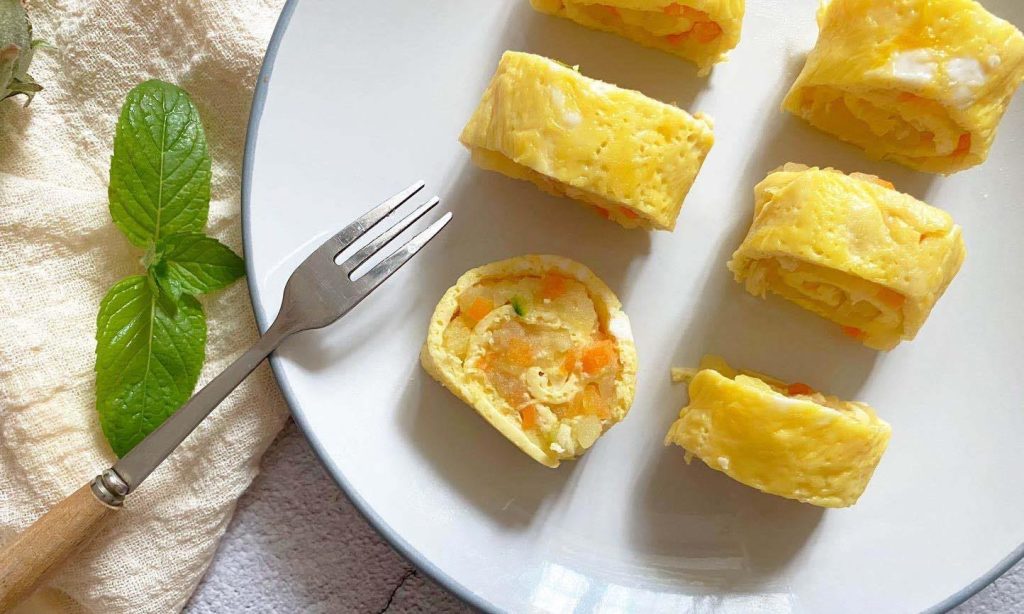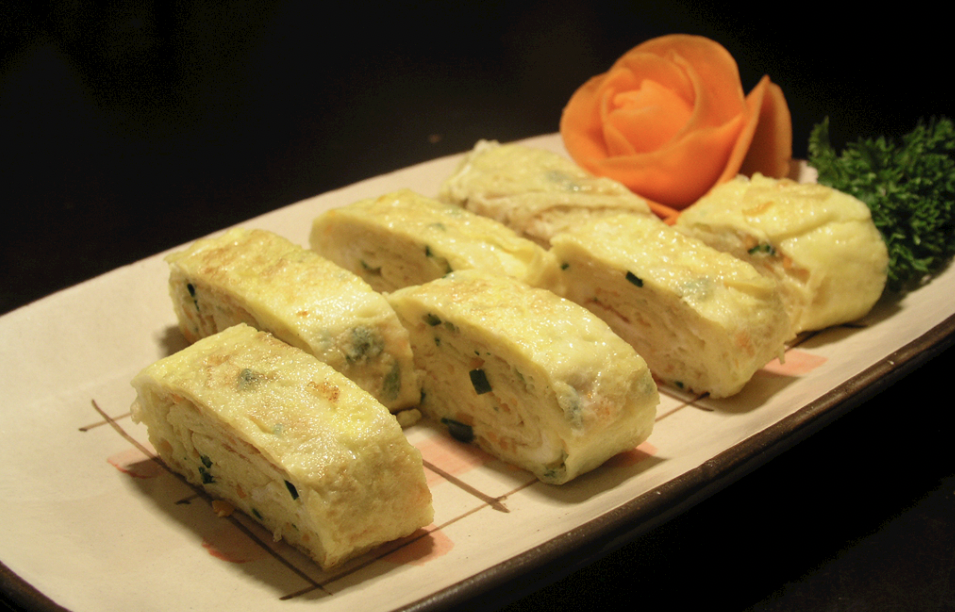In the realm of culinary delights, Korean dramas have long been a source of inspiration, their screens filled with dishes that are as compelling as the stories they accompany. Among these televised treasures is the Korean Egg Roll, a dish that exudes the warmth of home with every tender, flavorful slice. It is a recipe that has crossed the barriers of the screen, inviting viewers to recreate the magic in their own kitchens.
Ingredients:
- Eggs: 4
- Ham (optional): To taste
- Diced Carrots (optional): To taste
- Chopped Green Onions: To taste
- Salt: To taste
- Cornstarch: 1 spoonful

Recipe:
1️⃣ Crack four eggs into a mixing bowl. Add your choice of finely chopped vegetables and ham. Remember to keep the pieces small to ensure they cook through and to maintain a pleasant texture.
2️⃣ Season the mixture with salt to your liking (and remember, if it’s too salty, that’s on your palate, not the recipe!).
3️⃣ Stir in a spoonful of cornstarch (or any starch you have on hand—potato or corn will do). This is not just any ingredient; it’s a culinary chameleon, known by many names across the lands—cornstarch in Hong Kong, potato starch in mainland China, and tapioca starch in Taiwan. Its purpose is to thicken the egg mixture, allowing it to set into a roll without falling apart.

4️⃣ Whisk the concoction until it’s well-mixed and homogenous.
5️⃣ Heat a small amount of oil in a pan over low heat. The entire cooking process should be done gently—low and slow. Once the pan is just oiled, pour in a quarter of the egg mixture and quickly tilt the pan to spread the eggs evenly across the surface.
6️⃣ Before the egg sets completely, start rolling it up, tenderly, using chopsticks or a spatula for assistance. This is a delicate dance of timing and heat—too hot, and the egg will set too quickly; too slow, and it won’t roll.
7️⃣ After rolling the first layer, pour another quarter of the egg mixture into the pan, tilting it again to cover the base. The process is a repetitive art—pour, tilt, cook, and roll—until all the egg has been used.
8️⃣ Once fully rolled, let the egg roll rest for a moment before transferring it to a cutting board. Slice it into bite-sized pieces, revealing the layers of your culinary craftsmanship.
This dish, while seemingly simple, carries the weight of tradition and the touch of home cooking. It’s a staple in Korean households, enjoyed for breakfast, as a snack, or even as a side dish in a larger meal.

